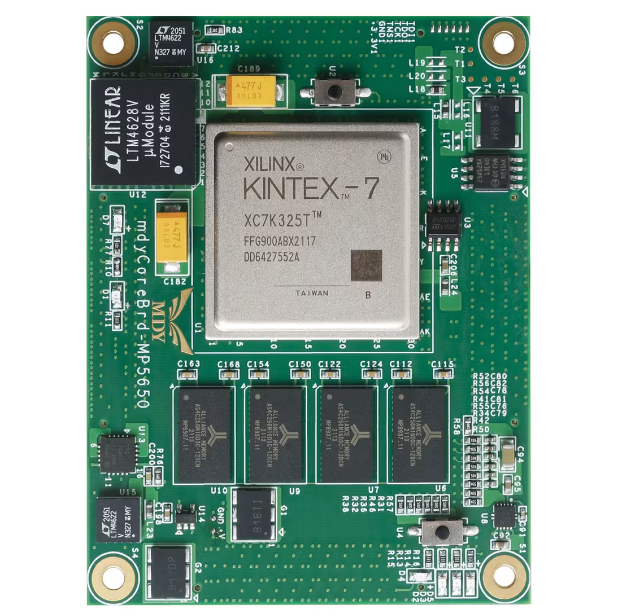
A Field-Programmable Gate Array (FPGA) is a reconfigurable semiconductor device that allows users to customize its hardware functionality after manufacturing. Unlike fixed-function ASICs (Application-Specific Integrated Circuits), FPGAs offer on-demand programmability, making them ideal for prototyping, adaptive systems, and applications requiring frequent updates.
At their core, FPGAs consist of:
-
Configurable Logic Blocks (CLBs): Basic building blocks with look-up tables (LUTs) and flip-flops, enabling logic operations.
-
Programmable Interconnects: Routing channels that connect CLBs, allowing flexible signal paths.
-
I/O Blocks: Interfaces for connecting to external devices (sensors, memory, peripherals).
-
Specialized Blocks: Embedded processors, DSP slices, and memory blocks (e.g., BRAMs) for high-performance tasks like signal processing.
Users program FPGAs via Hardware Description Languages (HDLs) like Verilog or VHDL, defining how logic blocks and interconnects operate. This flexibility lets FPGAs adapt to evolving standards (e.g., 5G, AI) without redesigning hardware.
-
Prototyping: Engineers use FPGAs to test ASIC designs before mass production, reducing development costs.
-
Industrial Automation: Real-time control systems, robotics, and machine vision rely on FPGAs for low-latency processing.
-
Telecommunications: 5G base stations and network routers use FPGAs to handle variable data rates and protocol updates.
-
AI & Machine Learning: Edge devices leverage FPGAs for efficient inference, balancing speed and power use.
-
Aerospace & Defense: Radiation-hardened FPGAs operate in harsh environments for radar, avionics, and secure communications.
-
Reconfigurability: Update functionality via software, extending product lifespans.
-
Low Latency: Parallel processing architecture outperforms CPUs/GPUs for time-critical tasks.
-
Customization: Tailor performance to specific workloads without hardware overhauls.
Keywords: FPGA, Field-Programmable Gate Array, reconfigurable logic, FPGA applications, Verilog FPGA, industrial FPGA, 5G FPGA.
FPGAs bridge the gap between flexibility and performance, driving innovation in industries where adaptability and speed are critical.
